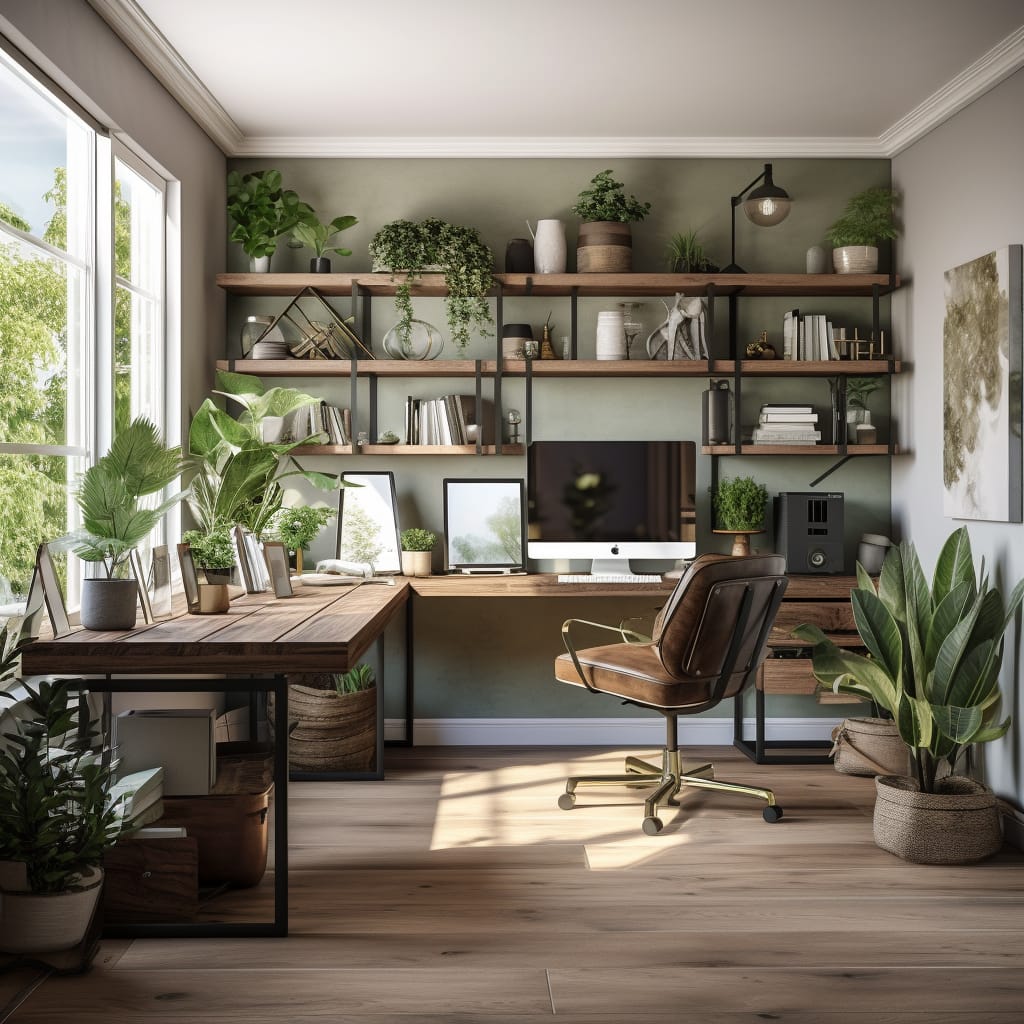Create a Home Office Space that Inspires Productivity

Creating a home office that inspires productivity requires more than just a desk and a chair. It's about creating a space that motivates you, reduces stress, and helps you stay focused. Here are some tips to design a home office that encourages productivity.
Choosing the Right Home Office Space
- Quietness. You need a space where you can focus and get work done without distractions. This may mean choosing a room that is away from the main living area, or even a separate building.
- Natural light. Natural light is not only good for your mood, but it can also help you stay focused and productive. If possible, choose a space with a window that gets plenty of natural light.
- Privacy. If you share your home with others, you may need a space that you can close off when you need to focus. This could be a bedroom, a study, or even a closet that you've converted into an office.
- Storage. You'll need a place to store all of your office supplies, files, and equipment. Make sure the space you choose has enough storage space to keep everything organized and out of the way.
Choosing the Right Home Office Furniture
- Chair. The chair is the most important piece of furniture in your home office. Make sure you choose a chair that is adjustable so you can find the perfect fit for your body. The chair should also have good lumbar support to help keep your spine in alignment.
- Desk. The height of your desk is also important. Your elbows should be at a 90-degree angle when you are typing, and your feet should be flat on the floor. If your desk is too high or too low, you may experience pain in your neck, shoulders, or back.
- Monitor. The position of your monitor is also important. The top of your monitor should be at eye level when you are sitting up straight. You may need to use a monitor arm to position your monitor correctly.
Understanding the Types of Lighting for Your Home Office
There are two main types of lighting that you need to consider for your home office:
- General lighting provides overall illumination to the room. This can be from overhead lights, wall sconces, or even a lamp.
- Task lighting provides focused light on your work area. This is important for tasks such as reading, writing, or using a computer.
The best way to achieve the right balance of general and task lighting is to use a combination of different light sources. For example, you could have overhead lights for general illumination and a desk lamp for task lighting.
Using Natural Light and Artificial Lights
If you have a window in your home office, try to position your desk so that you get natural light. Natural light is not only good for your mood, but it can also help you to stay focused and productive.
If you don't have a window in your home office, or if you need more light, you can use artificial lights. When choosing artificial lights, there are a few things to keep in mind:
- The color temperature of the light. The color temperature of light is measured in Kelvins (K). Warmer light has a lower Kelvin rating, while cooler light has a higher Kelvin rating. For a home office, you'll want to choose light with a Kelvin rating of around 3,000-4,000K. This will provide you with a warm, comfortable light that is not too harsh.
- The brightness of the light. The brightness of the light is measured in lumens. The amount of lumens you need will depend on the size of your home office and the amount of light you need.
- The type of light bulb. There are a few different types of light bulbs that you can use in your home office. LED light bulbs are a good option because they are energy-efficient and long-lasting.
Steps to Organize Your Home Office
- Declutter. The first step to organizing your home office is to declutter. This means getting rid of anything that you don't need or use. Once you've decluttered, you'll have a better idea of what you need to store and how to organize it.
- Use labels. Once you know what you need to store, label everything so you can easily find it. This will save you time and frustration when you're looking for something.
- Use storage containers. There are a variety of storage containers available, so you can find ones that fit your needs and your style. Use shelves, bins, drawers, and cabinets to store your office supplies, files, and other belongings.
- Keep your desk clear. Your desk should be your workspace, so keep it clear of clutter. This will help you stay focused and productive.
Personalizing Your Home Office
Artwork
Hang inspiring artwork on the walls of your home office. This could be anything from paintings to photographs to prints. If you're not sure what to choose, look for artwork that reflects your interests or inspires you.
Plants
Adding plants to your home office can help to improve the air quality and create a more relaxing atmosphere. Choose plants that are easy to care for and that will thrive in the light conditions in your office.
Favorite Colors
Use your favorite colors to decorate your home office. This could include paint colors, furniture, or accessories. Choosing colors that you love can help to make your office more comfortable and inviting.
Personal Belongings
Add personal belongings to your home office to make it feel more like your own space. This could include family photos, souvenirs from travels, or awards you've received.
Remember, your home office should be a place where you feel comfortable and focused. Use these tips as a starting point and tailor them to suit your specific needs and personal style. Happy working!